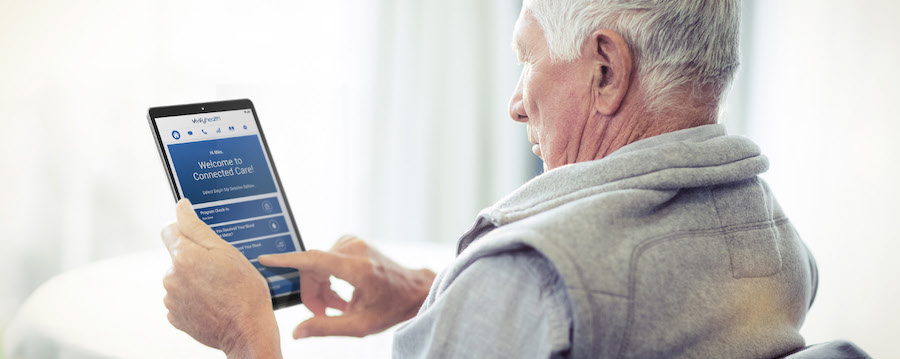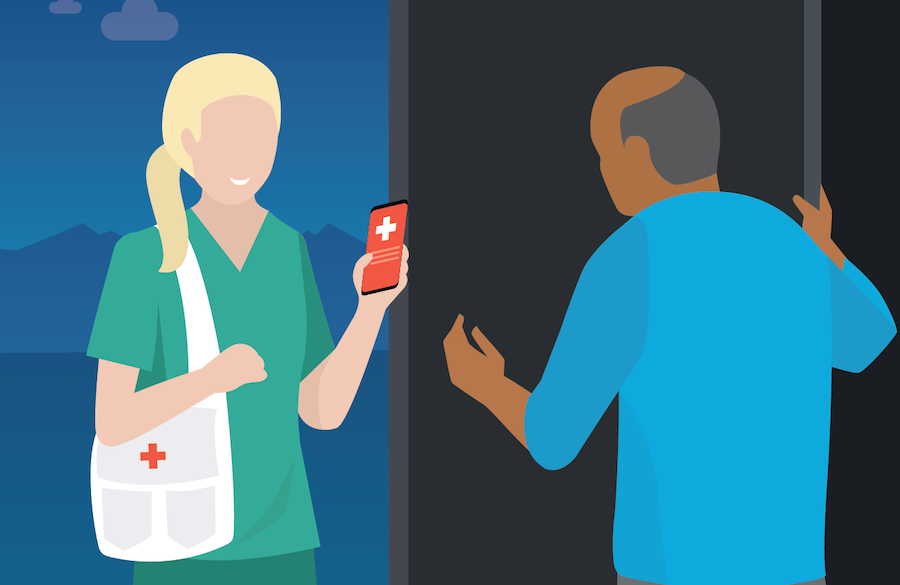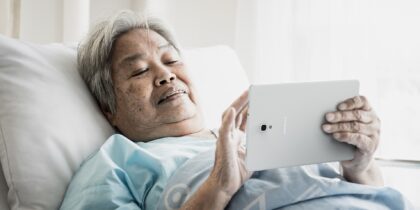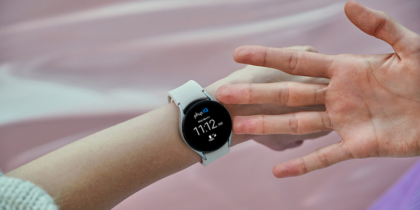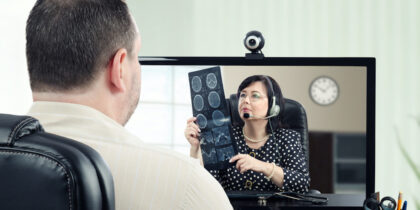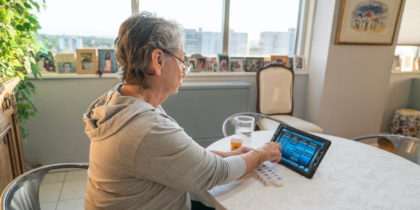If slow and steady wins the race, remote patient monitoring (RPM) got off to a strong start. The technology has been around for years, and every January, industry analysts predicted this would be the year remote monitoring finally took off. But until recently, the pace of growth was far more tortoise than hare.
That all started to change last year, when the Centers for Medicare and Medicare Services (CMS) changed its reimbursement rules to make RPM more accessible. Then COVID-19 came along and made it essential.
Here’s why experts can now say with certainty that 2020 is the year RPM finally took off.
1. Contactless care during COVID-19
Even before coronavirus, the global RPM systems market was expected to double over the next few years. Revised predictions from Research and Markets show it growing even faster — from $745.7 million this year to more than $1.7 billion by 2027.
Public health experts have advised seniors and people with chronic diseases — the people who most need regular care and physician follow-ups — to shelter in place for the foreseeable future and avoid places where they might come into contact with infected people, including medical environments. At the same time, physicians have also needed ways to keep tabs on noncritical COVID-19 patients without bringing them out of quarantine.
Many healthcare providers are using telemedicine and videoconferencing tools to connect with patients during the pandemic, but unless patients own their own biometric devices, physicians can’t capture their vital signs. Even in a clinical setting, checking a patient’s vital signs only gives physicians a snapshot. With an RPM solution that gathers patients’ biometric data every day and applies analytics, physicians get a big-picture view of the patient’s health and can spot troubling trends before they turn into major problems.
2. Reduced readmissions
Coronavirus added a sense of urgency to remote monitoring deployments, but as of last fall, 88 percent of healthcare providers were already implementing or investigating remote monitoring solutions, according to a 2019 survey by Spyglass Consulting.
One reason for this increased interest and demand is the effectiveness of remote monitoring. Study after study shows that it helps to improve patient care and reduce readmissions. In fact, 68 percent of physicians “strongly intend” to use remote monitoring technology in the future, according to a Consumer Technology Association (CTA) study. Perceived benefits include:
- Improved patient outcomes (49 percent)
- Improved compliance rates (44 percent)
- Patients taking more ownership of their health (42 percent)
Having patients take ownership often means decreased readmissions, and individual solutions providers have demonstrated consistent results. For example, Vivify Health, a Samsung partner, helped Ascension at Home reduce readmissions from 15 percent to 3 percent. At UPMC, Medicare patients using Vivify are 76 percent less likely to be readmitted to the hospital than similar patient populations.
Even CMS has studied the value of RPM for its Chronic Care Management program, and found that it decreased readmissions and saved Medicare millions of dollars.
3. New CMS reimbursement rules
All that data convinced CMS to change its strategy around remote monitoring. Until 2018, CMS — the single largest health payer in the U.S. — only reimbursed remote monitoring for patients in rural or remote areas. In 2018, CMS designated a new reimbursement code, CPT 99091, which made the service accessible to more patients, but it put the burden on physicians to manage these programs and didn’t cover all the costs healthcare providers might incur.
In 2019, CMS activated three new reimbursement codes: CPT 99453, CPT 99454 and CPT 99457. Under these codes, Medicare began to pay for the initial setup, the device and the ongoing management of remote monitoring programs. The new rules also empowered clinical staff to help manage the program, rather than requiring doctors to do all the legwork on their own. In 2020, CMS added an additional code, CPT 99091, which lets physicians bill for an additional 30 minutes of time with remote patients each month, whether patients are interacting with their doctor or a qualified clinical staff member.
These rule changes are permanent, but since the start of the COVID-19, CMS has temporarily broadened telehealth access — allowing healthcare providers to use remote monitoring for all patients, whether they’re being treated for coronavirus or a chronic health condition.
Your definitive guide to EVV compliance
Discover how mobile solutions can can help your agency satisfy your state's EVV requirements. Download Now
4. Improved ease of use
Not only are remote monitoring solutions getting results, they’re also getting better with age. Many modern solutions are built into wearables or on top of smartphones and tablets — which allows the software to leverage sensors in the device and stream biometric data (such as heart rate, balance and sleep patterns) directly to the remote monitoring platform. Rather than expecting patients to take their own vitals and enter that data into the platform, mobile solutions enable users to connect Bluetooth-enabled blood pressure cuffs, blood glucose monitors and weight scales — and transmit that data to the platform automatically.
This makes it easier than ever for patients to gather and share health data — and for physicians to make sense of it. Unlike the diabetic log books of old, physicians don’t need to scan rows of handwritten numbers looking for patterns. Nor do they need to scan spreadsheets of data from patients’ smartwatches and fitness trackers. Instead, the data is run through algorithms that spot patterns, note trends and even apply predictive analytics to warn about future problems. Physicians get this information in real time, not when the patient comes back for a checkup — or worse, when the patient gets readmitted to the hospital.
Some RPM providers are also integrating their solutions with electronic health records (EHR) systems. That way, physicians can view data and insights from the remote monitoring data solution inside the EHR, alongside the patient’s other pertinent health information. And with the right clinical communications solution in place, physicians can even receive mobile alerts if a patient’s data needs immediate attention.
But it’s not just patient data. It’s actionable data — the kind that improves patient care and their healthcare experience.
5. Patient readiness
To justify the investment in RPM, healthcare organizations need to feel confident that it will not only improve patient care but, just as importantly, that patients will actually use it. Most chronically ill individuals are older, generally less tech-savvy and often warier that technology will intrude on their personal life.
This becomes less of a problem as mobile technology becomes more user-friendly and less intimidating to seniors. In fact, 53 percent of the 65-plus crowd own a smartphone, according to Pew Research Center.
Overall, people are also more open to remote monitoring than they have been in the past. According to the CTA report, 56 percent of people would happily share health data with their doctors if they believed it would lead to a more accurate diagnosis and better treatment. Survey respondents also cited data security as their greatest concern, underscoring the importance of secure remote monitoring solutions.
Coronavirus fears have also made patients more interested in telehealth solutions such as RPM and virtual visits. Fifty-nine percent of consumers say they are more likely to use telehealth services now than before COVID-19, according to a recent Black Book Market Research survey.
Bottom line: Patients are ready for RPM, physicians are ready for it, studies show it works, and CMS is paying for it. Add to that the need for people to shelter in place and avoid COVID-19, and RPM has finally hit its stride. Now it’s off to the races.
Ready to launch an RPM program for your organization? Answer these five key questions to evaluate your needs and goals. And discover how mobile solutions can help your agency satisfy your state’s EVV requirements.
